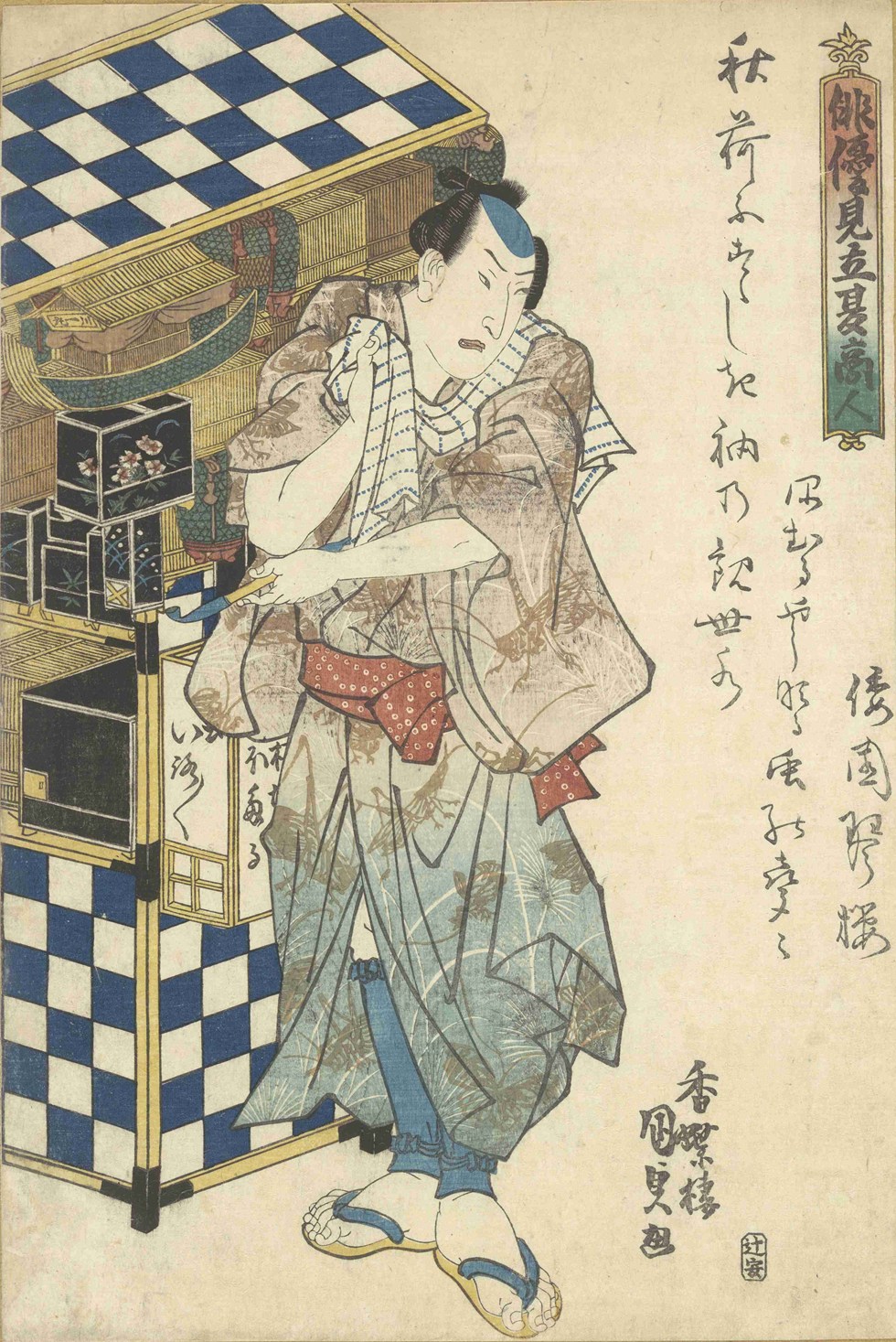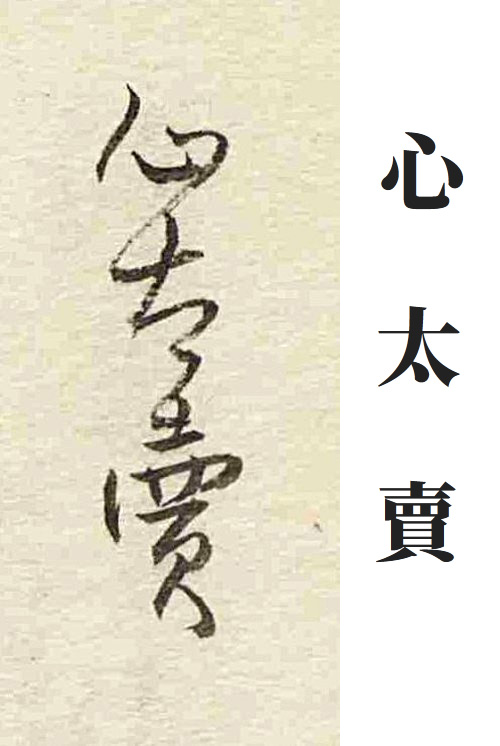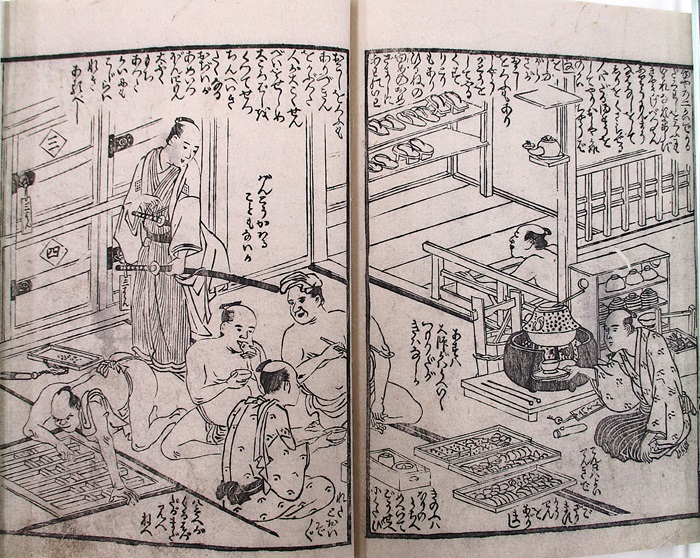
Supporting
Shops
- Exclusive Guide to Shopping in Edo
- Tokyo Shiryō Collection 883-1
-
Across three booklets—Volume 1, Volume 2, and Food and Drink—it lists a total of 2,622 shops, giving their names, locations, and trademarks, organized by trade. The image shown here is the page for drapers, featuring prominent establishments such as Echigoya and Shirokiya.
-

- Picture Book of Amusements in the Eastern Capital
- Tokyo Shiryō Collection 025-25
-
This is an illustrated book of famous places in Edo. Shown here is the Echigoya draper’s shop in Surugachō. The bustling scene at Echigoya was regarded as a noted sight of the city and was depicted in several nishikie woodblock prints.
-

- Shirokiya
- Tokyo Shiryō Collection 0421-C72
-
This nishikie print depicts the frontage of Shirokiya, a major draper’s shop. Many of the shop assistants working in Edo were hired at the main store in Kyoto when they were around eleven or twelve years old, and moved away from their family homes to live in the Edo branch.
-

Street Peddlers
It was the street peddlers who sustained the daily lives of ordinary people. They sold a wide variety of goods, ranging from fish and vegetables to daily necessities, toys, and even plants and animals.
- Collected Illustrations of Vendors by Shimizu Seifū
- Kaga Collection 356
-
Among the delicacies especially prized by Edo townspeople with a taste for seasonal “firsts” was the new season's bonito. Mobile fishmongers carried buckets of bonito purchased at the fish market on shoulder poles and went out to sell them to their regular customers.
-

- Famous Places in the Eastern Capital:Surugachō
- Tokyo Shiryō Collection 0421-C15
-

- Quiz
-
What is the person in this picture selling?
Tokoroten Vendor
Tokoroten, a jelly made from tengusa seaweed, was enjoyed as a summer delicacy. The tokoroten vendor pressed the jelly through a tubular instrument resembling a musket, producing thin noodle-like strands. Customers ate it with condiments such as sugar or soy sauce.- Collected Illustrations of Vendors by Shimizu Seifū
- Kaga Collection 356
A common sight in the Edo summer was that of street vendors selling chilled water, goldfish, and insects. This nishikie print likens these summer vendors to kabuki actors.
- Guide to Actors as Summer Vendors
- Tokyo Shiryō Collection 5714-C31-1
-
Distinct from ordinary vendors of drinking water, hiyamizuuri or chilled water sellers walked the streets in summer carrying buckets of chilled water on shoulder poles.
-

- Guide to Actors as Summer Vendors
- Tokyo Shiryō Collection 5714-C31-2
-
Goldfish vendors, who carried buckets filled with goldfish or rice fish on shoulder poles and peddled them through the streets, were also a familiar feature of summer in Edo. Keeping goldfish was originally a pastime of the wealthy, but had spread to ordinary townspeople by the late Edo period.
-
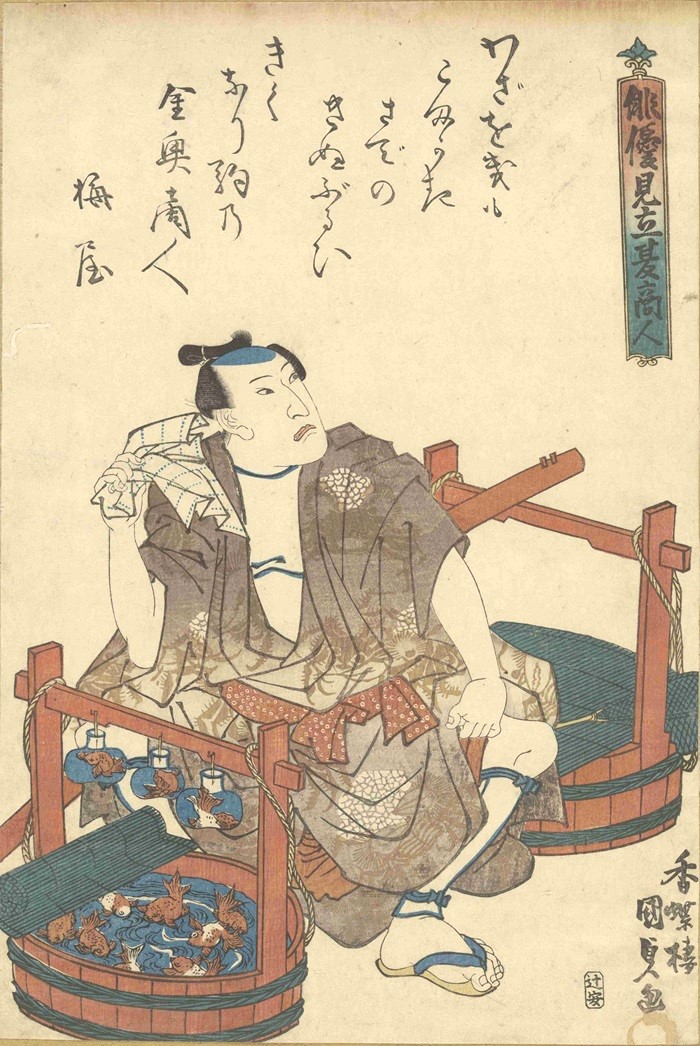
- Guide to Actors as Summer Vendors
- Tokyo Shiryō Collection 5714-C31-3
-
Insect vendors set up their stalls in shaded places, hanging cages of insects from the eaves. They sold fireflies, crickets, and other insects whose calls could be appreciated for enjoyment.
-

Recycling Business
The people of Edo repaired and reused almost everything. Numerous occupations were connected with recycling, including the collection of unwanted goods, repair work, and the sale of secondhand items.
- Contest of Imayō Poetry on Workers
- Kaga Collection 7297
-
This booklet takes the form of a contest of poems, each depicting a different occupation. [The poems are in the imayō style, which originated in the Heian period (794 to 1185 AD).] The business of purchasing worn-out umbrellas was known as furugasakai or furubonekai. The collected umbrellas were taken to wholesale dealers, who replaced the paper, cleaned them, and restored them for reuse. Even the oiled paper attached to the umbrellas was repurposed as wrapping for fish, meat, and other items.
-
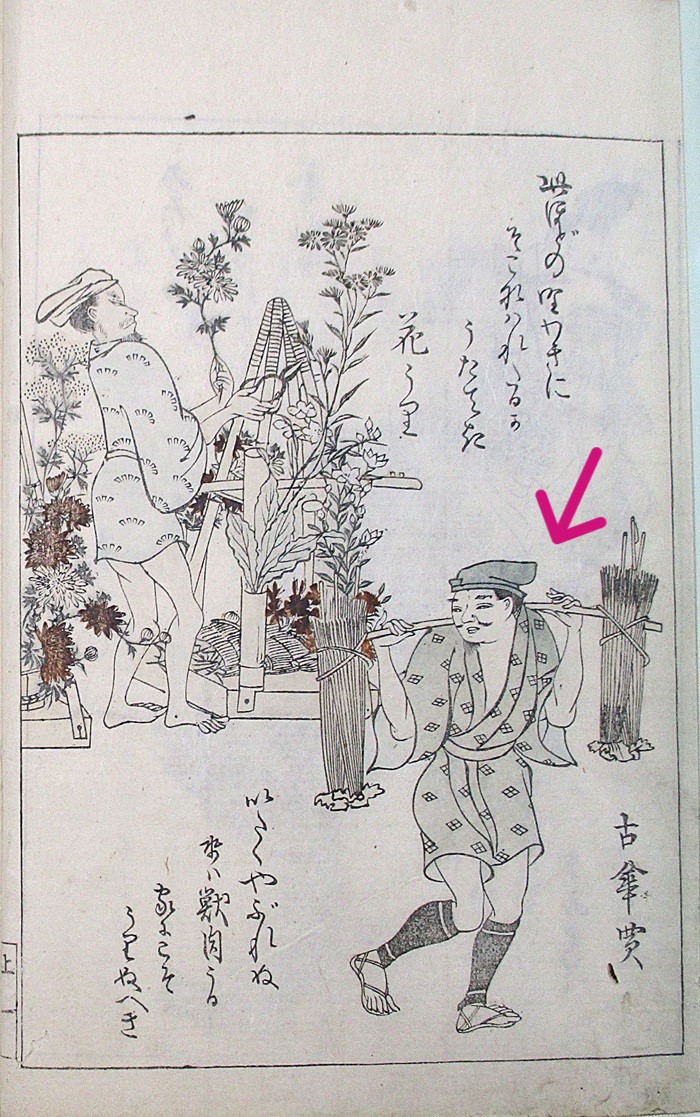
- Contest of Imayō Poetry on Workers
- Kaga Collection 7297
-
This illustrates furuwankai workers bundling together collected bowls in a sack. Furuwankai was a type of secondhand dealer who purchased old or broken bowls. The bowls were either repaired and resold or taken directly to flea markets.
-
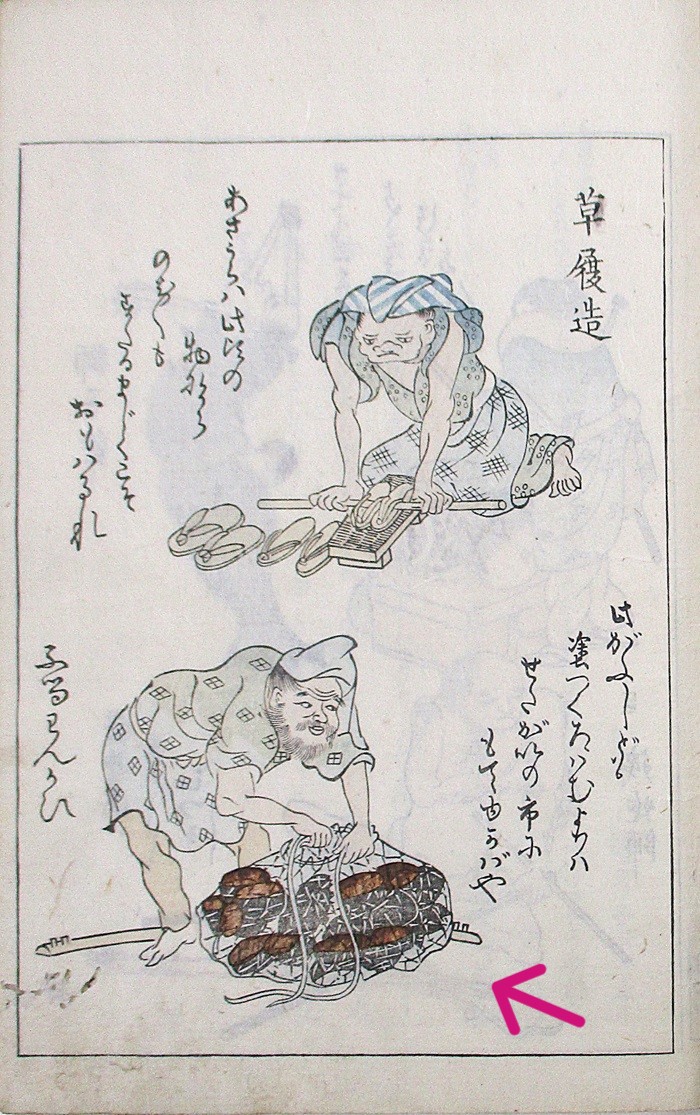
- Contest of Imayō Poetry on Workers
- Kaga Collection 7297
-
The kamikuzukai (waste paper buyer) walked through the city carrying baskets on a shoulder pole, purchasing unwanted items such as account books or practice sheets. The collected paper was sold to wholesale dealers, where it was pulped and made into recycled paper, which was then used for products such as toilet paper.
-

- Pictorial Book of Workers: Takarabune Katsura no Hobashira
- Kaga Collection hako100-2
-
For ordinary people in Edo, it was common to obtain everyday tools and clothing from secondhand shops or used-clothing dealers. Edo was home to areas where such shops clustered together, and these were said to have been bustling with activity.
-
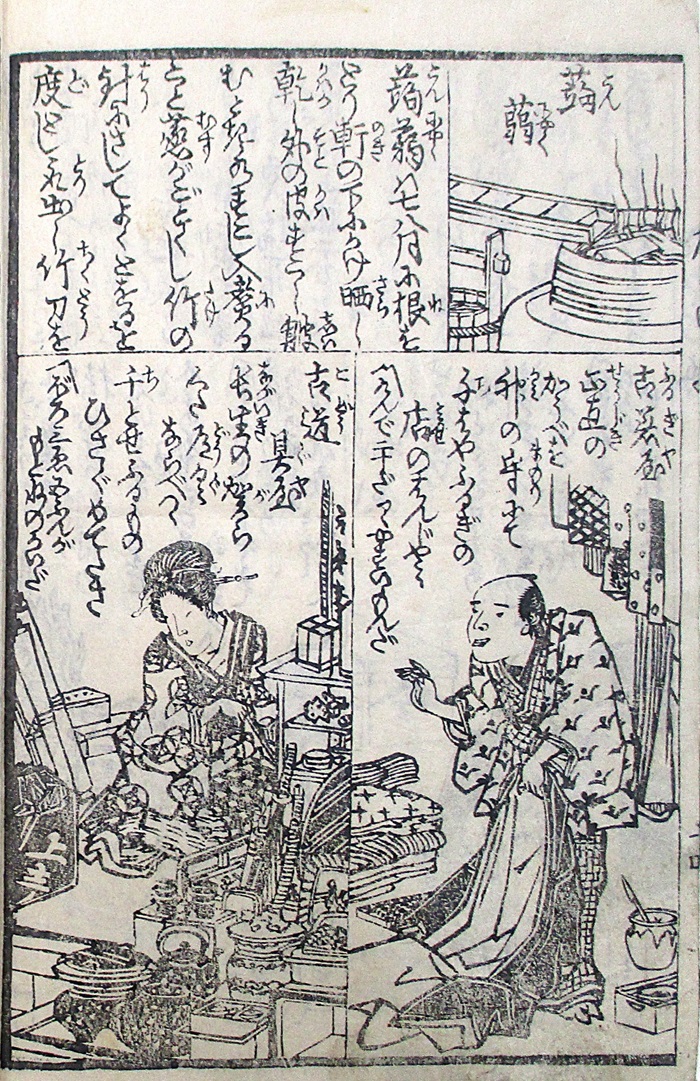
- A Smash Hit: Ichikawa Danzō Playing Seven Roles
- Kaga Collection hako50-18
-
This is a page from the kibyōshi illustrated storybook titled A Smash Hit: Ichikawa Danzō Playing Seven Roles. In the lower right is a figure gathering horse manure for reuse. In this way, even excrement was put to effective use as fertilizer in Edo. Along highways and in post towns where many horses passed, some people earned a daily income by collecting horse manure and selling it to nearby farmers.
-
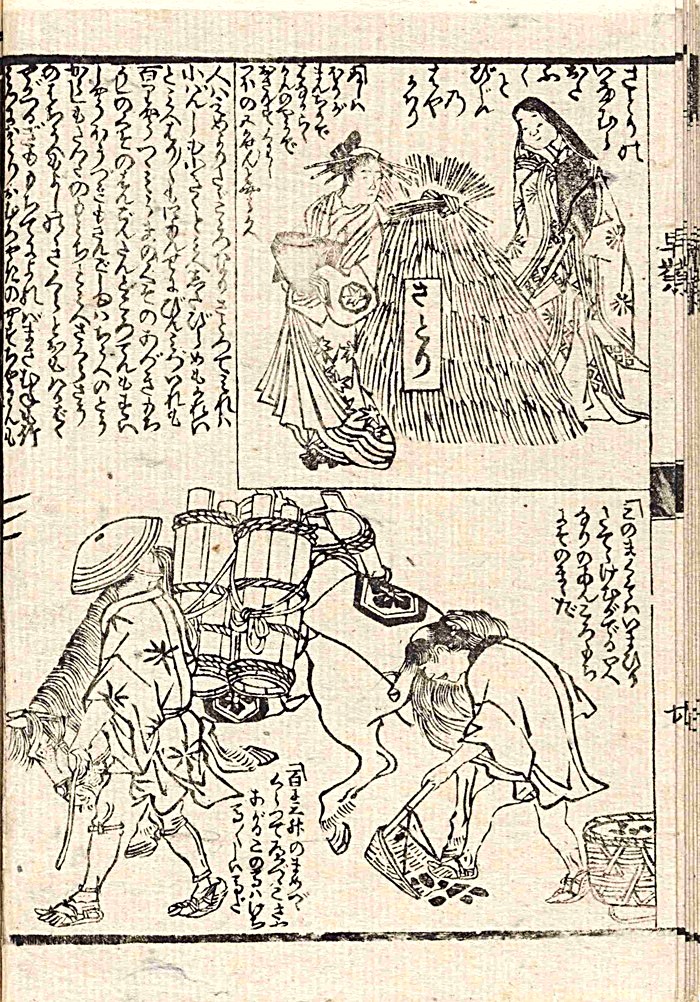
Bathhouses / Barber Shops
- New Stories of Bathhouses for the Wise and Foolish
- Kaga Collection hako48-5
-
In Edo, few households had private baths, and it was common to make use of public bathhouses (yuya). The picture on the left depicts the cleaning of a bathhouse, while that on the right shows male patrons relaxing on the second floor. Bathhouses served as social spaces where visitors could drink tea, converse, or enjoy games such as Go and Shogi.
- A Story at the Ukiyodoko Barber Shop
- Collection of Special Acquisitions(from various individuals) 532
-
This depicts the interior of a barber’s shop. Customers sit facing the street, while in the adjoining room people chat as they wait for their turn. Like the public bathhouse, the barber’s shop served as a social space for the townspeople of Edo.
-
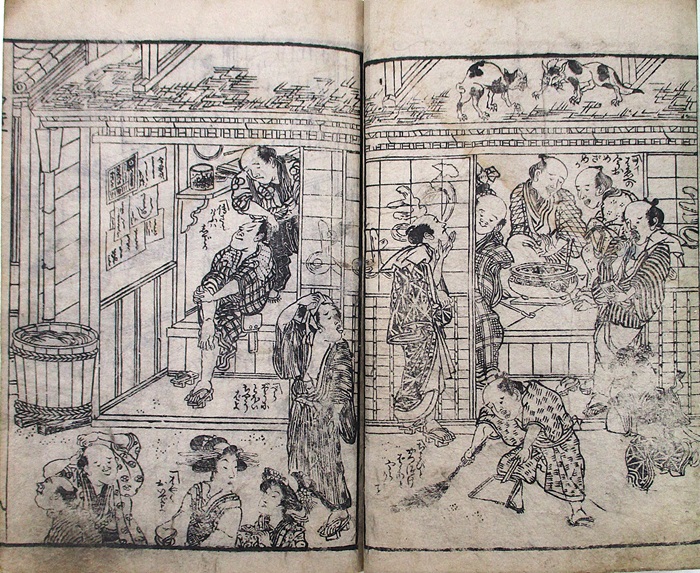
 文化財ウィーク
文化財ウィーク


